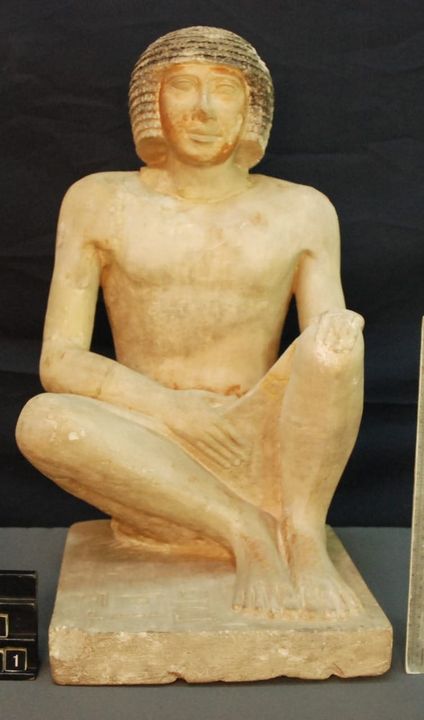وقالت الأستاذة صباح عبد الرازق مدير عام المتحف، أن هذا التمثال يُعد أحد القطع الأثرية التي تبرز أهمية الأطباء في مصر القديمة، وهو مصنوع من الحجر الجيري الملون، وتم العثور عليه في الجيزة عام ١٩٢٨.
وأشارت إلى أن المصريون القدماء توصلوا إلى طرق طبية متطورة، جمعت بين العلاجات العشبية والجراحة، حيث عثر علماء الآثار على عددا من الوثائق المكتوبة التي تصف الممارسة الطبية المصرية القديمة، بما في ذلك بردية إيبرس؛ فهي تذكر تفاصيل الأمراض المتعلقة بالقلب وكيفية علاجها.
كما مارس المصريون مختلف التخصصات الطبية فكان هناك طب الأسنان والعيون، والأمراض الباطنة. كما اهتم قدماء المصريين بعلم التشريح وآليات عمل جسد الانسان وطرق الحفاظ عليه وذلك لإتمام عملية التحنيط.
جدير بالذكر أن اليوم العالمي للمتاحف حدده المجلس الدولي للمتاحف (الأيكوم) عام ١٩٧٧ بهدف زيادة الوعي بأهمية المتاحف في تطوير المجتمعات باعتبارها الذاكرة الحية للشعوب، وإتاحة الفرصة للمختصين بالمتاحف من التواصل مع الجمهور وتنبيههم للتحديات التي تواجه المتاحف.
International Day of Museums :
“The Future of Museums Recover and Reimagine”
This year, the International Day of Museums sheds light on museums recovering from the repercussions of the Coronavirus and re-imagining the future of work during this crisis and in its aftermath, under the title ‘The Future of Museums Recover and Reimagine”
On this day , the Egyptian Museum in Tahrir displays an artifact that highlights the importance of doctors in ancient Egypt. It is A Painted limestone statue of Niankhre II, identified as the inspector of physicians Limestone, Dynasty 5, Old Kingdom, Giza, JE 53150
The medical profession is one of the noblest and honourable professions, and doctors are respected and appreciated, and they have a vital role today in confronting the repercussions of the Coronavirus crisis. A doctor has a fundamental and effective role in helping society, advancing and preserving its capacity through disease resistance and elimination.
Archaeologists have found a number of written records that describe ancient Egyptian medical practice, including the Ebers papyrus. The scroll provides evidence of some sound scientific procedures. The heart: According to the Ebers Papyrus, the center of the body’s blood supply is the heart, and every corner of the body is attached to vessels. The Egyptians also practiced various medical specialties, so there was dentistry, ophthalmology, and internal diseases
The ancient Egyptians’ practice of preserving deceased people as mummies meant that they learned something about how the human body works
Hygiene was an important part of Egyptian life, and houses contained primitive bathrooms and toilets. Adornment and the outward appearance were considered important matters, and the ancient Egyptians took care to wash themselves, their clothes, and their food utensils, which helped protect their health. The ancient Egyptians knew advanced medical methods, which combined spiritual treatments, herbal remedies, and surgery.
